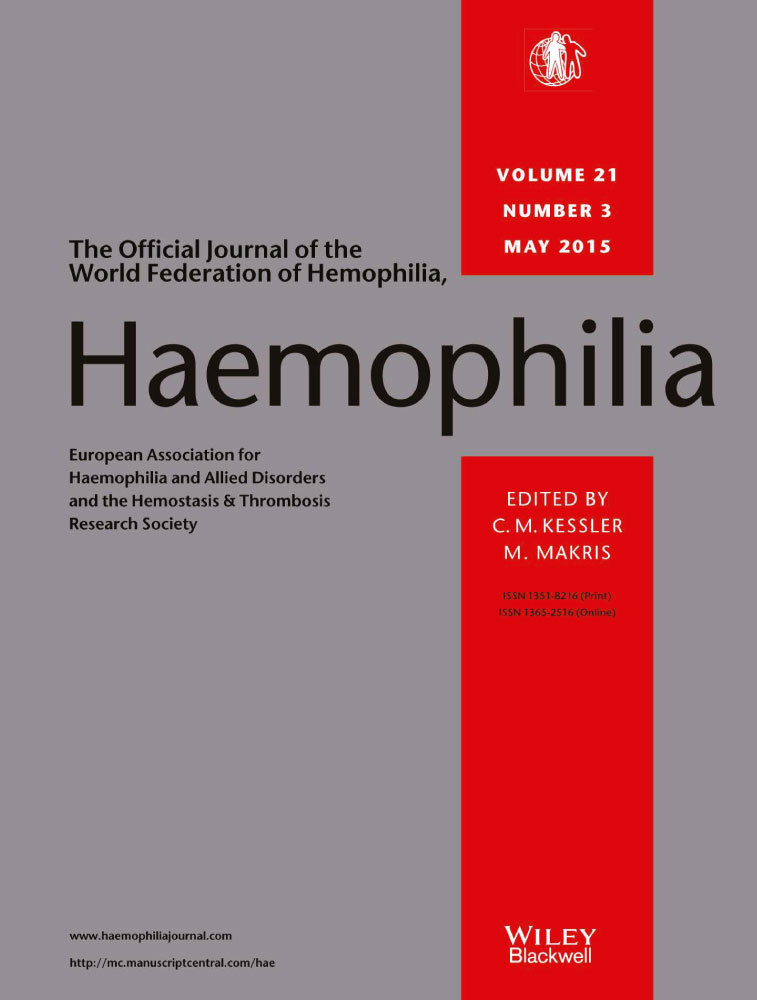Pharmacokinetic characterization of recombinant factor XIII (FXIII)-A2 across age groups in patients with FXIII A-subunit congenital deficiency
Summary
Three trials investigated the pharmacokinetics (PK) of recombinant factor XIII (rFXIII) A-subunit. To compare the PK characteristics of rFXIII among trials and different age groups of patients. Dosing with rFXIII 35 IU kg−1 every 4th week. Blood samples for PK assessments were collected regularly throughout the dosing interval from a total of 68 individual patients with FXIII congenital deficiency. The mean PK parameters were similar across the three age groups, and for the three trials, as well as constant over time based on results from patients participating in both mentor™1 and mentor™2 trials. The geometric mean half-life ranged from 11.6 to 15.0 days, and the trough FXIII activity levels ranged from 0.15 to 0.21 IU mL−1. The population PK model identified body weight as a statistically significant covariate influencing clearance (CL) and volume of distribution (Vd), with a similar increase in both parameters with increased body weight. The half-life was not affected by body weight. Gender (females vs. males) and age category (paediatric vs. adult) did not affect CL. The PK profile of rFXIII, after dosing with 35 IU kg−1 of rFXIII, was independent of age and comparable between trials and FXIII trough activity levels were constant. Despite rather large individual variation in the maximal FXIII activity levels, all individual mean trough activity levels were above 0.1 IU mL−1 during the entire duration of the trials. The results support that monthly dosing with 35 IU kg−1 of rFXIII to patients with FXIII A-subunit deficiency, regardless of age, is adequate for prophylaxis.




